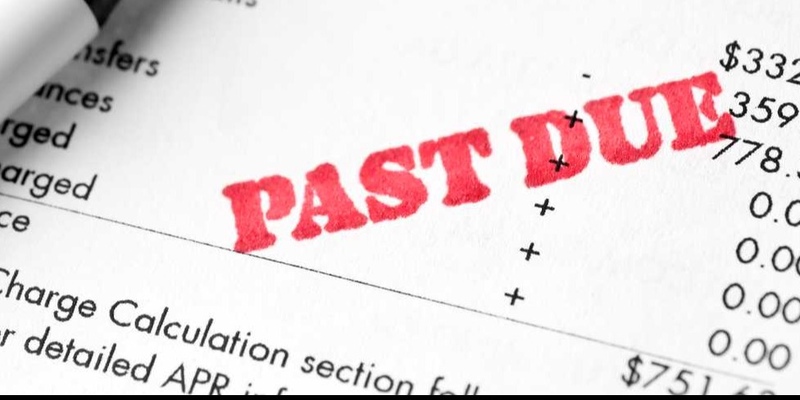Understanding Estimated Taxes and the Dreaded Penalty: A Complete Guide
Aug 28, 2024 By Rick Novak
Navigating the intricate world of taxes can feel like maneuvering through a complex labyrinth for many individuals. Among the various tax responsibilities faced by individuals and businesses, estimated taxes emerge as a critical yet often misunderstood component of tax compliance. Failing to grasp the nuances of estimated taxes can result in substantial penalties and financial stress in the future. In this all-encompassing guide, we will explore the realm of estimated taxes, elucidating what they entail, who is obligated to pay them, how to calculate them, and the repercussions for falling short of these obligations.
What Are Estimated Taxes?
Estimated taxes are regular payments that individuals, including sole proprietors, partners, and S-corporation shareholders, along with corporations, are required to submit to the Internal Revenue Service (IRS) and sometimes to state tax authorities. Unlike taxes withheld from salaries, which employers forward on behalf of employees, estimated taxes are directly paid by taxpayers on income not subject to withholding, such as self-employment earnings, interest, dividends, and capital gains.
Who Needs to Pay Estimated Taxes?
If you anticipate owing $1,000 or more in taxes when you file your annual tax return, and your withholding and refundable credits will be less than the lesser of:
- 90% of the tax indicated on your current year's tax return, or
- 100% of the tax indicated on your prior year's tax return (if your prior year's return covers all 12 months),you must make estimated tax payments throughout the year.
This requirement applies to individuals, sole proprietors, partners, and S-corporation shareholders with substantial additional income not subject to withholding. Corporations also have to meet estimated tax obligations if they expect to owe $500 or more in taxes for the current year.
How to Calculate Estimated Taxes?
Calculating estimated taxes can feel overwhelming, especially for those unfamiliar with tax laws and accounting principles. Luckily, the IRS offers various methods to assist taxpayers in estimating their quarterly payments. The primary methods are:
- Estimated Tax Worksheet: Utilize Form 1040-ES from the IRS, featuring a worksheet to aid in estimating annual income, deductions, and credits. With these figures, taxpayers can determine their quarterly payment amounts.
- Annualized Income Method: This approach enables taxpayers to calculate estimated taxes based on their income for each quarter of the year. By annualizing income, taxpayers can adjust their estimated payments to accommodate income fluctuations throughout the year.
- Prior Year's Tax Liability: For individuals with relatively stable incomes year over year, simplifying the estimation process can involve using the prior year's tax liability as a reference point. Dividing the prior year's total tax liability by four provides the quarterly payment amounts.
- Special Considerations for High-Income Taxpayers: High-earning individuals might face additional requirements and restrictions in calculating estimated taxes. Those with adjusted gross incomes surpassing specific thresholds could be obligated to pay extra Medicare taxes or net investment income taxes.
Strategies for Managing Estimated Taxes:

Understanding the fundamentals of estimated taxes is crucial for taxpayers, who can adopt various strategies to effectively manage their tax responsibilities and reduce potential penalties:
- Maintain Detailed Records: Accurate record-keeping of income, expenses, deductions, and credits year-round eases the estimation process, preventing surprises in tax liabilities. Streamlining with accounting software or a tax preparer helps in staying organized.
- Monitor Income Streams: Individuals with diverse income sources like freelancing, investments, and rentals should monitor earnings regularly to anticipate fluctuations and adjust estimated tax payments accordingly. Reviewing income and bank statements, along with investment portfolios, offers insights into tax liabilities.
- Utilize Withholding and Credits: Maximizing withholding from wages and leveraging tax credits like EITC, Child Tax Credit, and Retirement Savings Contributions Credit reduces estimated tax payments. Adjusting withholding allowances on Form W-4 or Form W-4P ensures sufficient tax deductions from paychecks.
- Consider Quarterly Reviews: Conducting quarterly evaluations of income, deductions, and credits allows taxpayers to adjust payment amounts promptly. Proactive management through quarterly reviews prevents year-end surprises in tax obligations.
- Plan for Tax Law Changes: Regular updates on tax laws help in anticipating changes affecting estimated tax liabilities. Being informed and consulting tax professionals assist in adjusting payments according to new legislation, avoiding financial impact surprises.
- Seek Professional Guidance: For taxpayers facing complex financial situations or uncertain estimated tax requirements, consulting tax attorneys, accountants, or enrolled agents provides tailored advice, tax planning strategies, and ensures compliance with tax laws and regulations.
Tax Planning Tips to Minimize Estimated Taxes:

Understanding estimated taxes is crucial, but effective tax planning is key to reducing tax burdens and enhancing financial positions. Here are some practical tips:
- Maximize Retirement Contributions: Boost your retirement savings in accounts like 401(k)s, IRAs, and SEP-IRAs to lower taxable income and tax payments.
- Explore Deductions and Credits: Uncover deductions for mortgage interest, medical expenses, and charitable donations, along with tax credits like the Lifetime Learning Credit and American Opportunity Tax Credit.
- Manage Capital Gains and Losses: Offset gains with losses strategically to minimize tax liabilities and consider tax-efficient investments.
- Implement Income Deferral Strategies: Delay invoicing or accelerate expenses to shift income to future years for reduced tax bills.
- Explore Tax-Efficient Investments: Consider municipal bonds, index funds, and ETFs for reduced taxable investment income.
- Consider Tax-Loss Harvesting: Sell underperforming investments to offset gains and lower taxable income, adhering to wash sale rules.
- Review Business Expenses: Scrutinize business costs to maximize deductions and lower taxable income.
- Plan Charitable Contributions: Donate appreciated assets to charities to avoid capital gains taxes and maximize deductions.
- Utilize Health Savings Accounts (HSAs) and Flexible Spending Accounts (FSAs): Contribute to HSAs and FSAs to reduce taxable income and enjoy tax benefits for medical expenses.
Conclusion:
Understanding estimated taxes is crucial for individuals and businesses to comply with tax laws and avoid penalties. By acquainting themselves with the rules and requirements, taxpayers can accurately estimate their tax liability, make prompt payments, and reduce the risk of underpayment penalties. While calculating and paying estimated taxes may appear daunting initially, taxpayers can utilize IRS resources and guidance to navigate tax compliance effectively.

Lifespan of An Appraisal

Steps to Making a Profit in Crude Oil Trading

Best Identity Theft Protection Services

High-Value Home Insurance: What is it?

Exploring the Common Ways to Move Expense Claims for Returning to School

What Is Total Shareholder Return (TSR)?

Understanding Whole Life and Universal Life Insurance: Which Is Right for You?

Companies Owned by Disney

All You Should Know About Debt Related Statute of Limitations

Understanding the Tuition and Fees Tax Deduction

10 Easy Post-Account Closure Steps To Secure Your Assets
